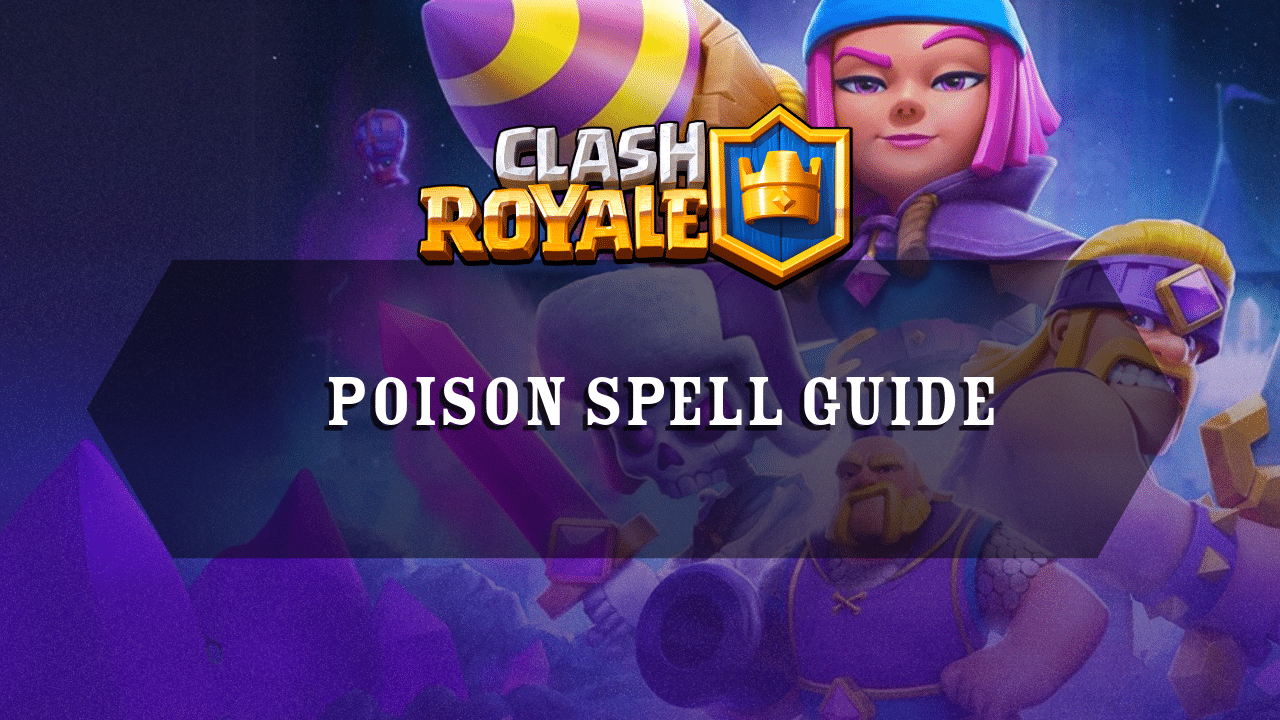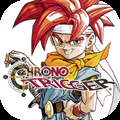
Introduction
Poison Elixir Cost4 RarityEpic TypeSpell ArenaJungle Arena Release Date29 February 2016The Clash Royale Poison Spell Guide explores the versatile and effective Poison spell, a tool that can significantly impact battles when used strategically. This guide will provide players with comprehensive strategies to maximize its potential. The Poison spell is unlocked at Arena 5, also known as Spell Valley. It is an Epic card that costs 4 Elixir and creates an area of poisonous toxin, dealing damage to enemy troops and buildings over time.
The Poison spell’s persistent damage makes it effective for controlling zones, applying pressure, and dealing with swarm units or buildings. It covers a substantial area, providing both offensive and defensive value. Despite the hazardous nature of the spell, it leaves the grass green, which adds a unique visual touch to its impact. The Poison spell is a key component in many deck strategies, capable of disrupting enemy plans while supporting your own offensive efforts.
Poison Stats
Attributes CostRadius
Duration
Slowdown
Target
Type
Rarity
4 3.5 8 sec -15% Air & Ground Spell Epic Level Statistics Level
Damage per second
Crown Tower Damage
Card Mastery
Type Level/Tier Objective RewardDamage Dealer 1 Deal a total of 50,000 Damage to enemy Troops or buildings 20 Poison Cards
75 2 Deal a total of 155,000 Damage to enemy Troops or buildings 6,000
75 3 Deal a total of 255,000 Damage to enemy Troops or buildings 150
75
Troop Destroyer 1 Destroy 350 enemy troops 9,000
125 2 Destroy 1,000 enemy troops 20
125 3 Destroy 1,750 enemy troops 15,000
125
Deck
P.E.K.K.A. Miner Poison Control
This deck focuses on controlling the battlefield with P.E.K.K.A. and Inferno Tower while using Miner and Poison for chip damage. Electro Wizard and Knight provide versatile support, and The Log helps manage swarms.
Miner Poison Hybrid Deck
A hybrid control deck that combines Miner for consistent chip damage with Poison to clear enemy swarms. Electro Wizard and Knight offer defensive support, while Minions and Ice Spirit provide additional offensive pressure.
Recruits Poison Bridge Spam
This deck applies relentless pressure by combining Royal Recruits and Elite Barbarians with Battle Ram and Bandit. Poison clears enemy defenses, while Heal Spirit and Archer Queen provide sustain and support.
Poison Mechanics
The Poison Spell is a powerful and versatile Epic spell that costs 4 Elixir to cast. It targets both air and ground troops as well as buildings, making it an effective tool for controlling large areas of the battlefield. The spell covers a 3.5-tile radius (equivalent to a 7-tile diameter) and applies damage over time (DOT) for 8 seconds, dealing 8 instances of damage, or “ticks,” during this duration. The Poison Spell also slows enemy troops by 15%, making it useful for hindering the movement of fast troops or defending against enemy pushes.
The damage dealt by the Poison Spell varies with its level. For example, at level 1, it deals 42 damage per second to troops and buildings, and 17 damage per second to Crown Towers. At level 6, the Poison Spell deals 57 damage per second to troops and buildings, and 14 damage per second to Crown Towers.
At level 11, it deals 91 damage per second to troops and buildings, and 23 damage per second to Crown Towers. At the max level (level 15), the spell deals 132 damage per second to troops and buildings, and 33 damage per second to Crown Towers. The total damage is calculated by multiplying the damage per second by 8 (the duration of the spell in seconds). This makes the Poison Spell an excellent choice for sustained damage and area denial during battles.
Offensive Tactics
The Poison Spell offers several offensive tactics that can give players a strategic edge. One effective strategy is to combine the Poison spell with a Hog Rider push. The Poison can clear out small defensive troops like Goblins or Minions that are commonly used to counter the Hog Rider. Additionally, it weakens units like Barbarians, rendering them less effective and preventing them from dealing substantial damage. The Poison also slows down enemy troops, reducing their damage output and giving your push more time to reach the opponent’s tower.
Another powerful offensive tactic is the Miner Poison combo. In this strategy, the Miner tanks damage while the Poison spell works on the defending troops. To avoid activating the King Tower with a Tornado, place the Miner one tile up from the middle and one tile out. Alternatively, placing the Miner inside the tower area is less predictable and can make it harder for the opponent to defend. You can also apply opposite lane pressure by placing the Miner on the inside and following up with a card in the opposite lane, forcing the opponent to split their attention.
For fast pushes, the Poison spell is incredibly useful. Its large radius means it doesn’t require precise placement, making it ideal for fast pushes where troops are deployed rapidly. The wide coverage also makes it difficult for opponents to react quickly, as they’ll need more time to move their troops out of the Poison’s range.
Pre-poisoning is another effective offensive tactic where players predict where the opponent will place their troops and use the Poison spell in advance. This can eliminate threats before they become significant problems and may bait the opponent into deploying additional troops, which gives you even more value from your spell.
When supporting building-targeting troops, the Poison spell helps deal with defensive units that can otherwise stop them. This often forces the opponent into making less efficient counters. Additionally, combining the Poison spell with other spells like Zap, The Log, or Tornado can be devastating. These spells can help keep enemy troops within the Poison’s radius for longer, ensuring more damage is dealt over time.
Finally, always be mindful of your opponent’s elixir count and potential counters when using the Poison spell offensively. Timing is crucial to ensure the maximum value from this powerful spell.
Defensive Tactics
The Poison spell is a powerful defensive tool, offering several ways to control the battlefield and slow down enemy pushes. One of its standout features is its large radius, which allows it to cover a wide area and effectively handle multiple enemy units at once.
For instance, Poison is particularly effective against swarms like Minion Horde, as it deals damage over time, eliminating them before they can deal significant damage to your tower. It also excels at slowing down high-damage units like Princes, Dark Princes, and PEKKAs, making them easier to manage and reducing their threat. However, keep in mind that the Poison’s slow effect does not stack with that of cards like Ice Wizard, Ice Golem, or Giant Snowball, so combining them may not always be the most efficient strategy.
When defending against Barbarian pushes, Poison can help your Barbarians survive longer against a Dark Prince’s splash damage, increasing their chances of eliminating the threat. Compared to cards like the Ice Wizard, the Poison spell offers more damage and a larger radius, making it a more effective choice in many scenarios. If you’re up against hut spam decks (like Tombstone, Goblin Hut, Barbarian Hut, or Furnace), the Poison spell is invaluable, as it damages both the spawning buildings and the troops they generate, giving you an elixir advantage while controlling the battlefield.
The Poison spell is also excellent when dealing with Elixir Collectors, as it can target both the Elixir Collector and the Crown Tower at the same time, allowing you to deal damage while gaining an elixir advantage. Its damage over time is also helpful for eliminating smaller units like Spear Goblins, Fire Spirits, or Barbarians, saving you elixir that would otherwise be spent on additional defensive cards. For optimal placement, it’s often best to cast the Poison spell on your side of the arena, slowing down the incoming push and giving your defensive units more time to deal with the enemy.
In the case of strong pushes, place the Poison spell at the bridge to help eliminate or hold off support units while your other defensive cards focus on the tank. If the opponent has back-end troops like Princess, the Poison spell can be used to target both the Princess and the tower, dealing damage to both. The Poison spell is an incredibly versatile and powerful defensive tool that, when used strategically, can help you control the pace of the match and neutralize a wide range of threats.
How to Maximize Value with Poison
To maximize the value of the Poison spell, it is crucial to make the most of its wide area of effect. The Poison spell is most effective when it targets as many enemy troops as possible within its radius. This allows you to deal significant damage to multiple units and gain a substantial elixir advantage. It’s important to prioritize value over tower damage; for instance, if the opponent deploys Three Musketeers in the back, it’s better to target the two Musketeers with the Poison spell rather than the tower with lower health. This way, you can deal with the stronger threats more effectively.
Another useful tactic is Predicted Poison (Pre-Poison), where you anticipate the opponent’s troop placement and cast the Poison spell in that area before they deploy their units. This allows you to quickly eliminate troops and disrupt their strategy. By understanding the opponent’s playstyle and positioning, you can manipulate them into deploying specific cards within the radius of your Poison spell.
Passive Poison is another effective strategy. When using Poison to target a single troop, place the spell so that the troop will walk into its radius, ensuring that it receives damage from all eight ticks. This not only maximizes the damage but may also force the opponent to hesitate or prevent them from deploying additional troops in the area.
When dealing with Furnace, timing is key. Wait three seconds after your opponent deploys the Furnace before casting the Poison spell. This ensures that the Fire Spirits spawned from the Furnace are caught within the radius, preventing them from reaching your tower. Additionally, make the most of the Poison spell’s large radius by positioning it strategically to hit multiple targets at once. For example, you can damage an Elixir Collector and the Princess Tower simultaneously if you place the spell correctly.
Using these tactics effectively can significantly increase the Poison spell’s value, making it an even more powerful tool in your Clash Royale arsenal.
Matchups
The Poison spell has certain matchups where it excels and others where its effectiveness is limited. Good matchups for the Poison spell include decks that rely on spawners, such as Tombstone, Goblin Hut, Barbarian Hut, and Furnace, as Poison can deal damage to both the spawners and the troops they generate. It is also highly effective against swarm units, like Minion Horde, which can be wiped out in one go due to Poison’s area of effect. Graveyard decks are another good matchup, as Poison can kill the skeletons summoned by the spell, disrupting the enemy’s strategy.
Poison also works well against Elixir Collector, as it can target both the collector and the crown tower, giving you an elixir advantage. Additionally, Poison can assist in controlling distractions during a Hog Rider push when paired with cards like Valkyrie, Witch, or Arrows, which can help clear out the defending units. Poison can also be useful against the Lava Hound, especially when used on the Lava Hound’s Balloon, preventing it from dealing too much damage. Lastly, Royal Hogs can be managed with Poison, especially when used alongside cards like Bomber, which can help defend against their pushes.
On the flip side, there are some bad matchups and considerations when using Poison. High-health troops, such as P.E.K.K.A., Golem, or Royal Giant, can be difficult for Poison to deal with effectively, as the spell’s damage over time may not be enough to quickly eliminate them. Fireball is another spell that can sometimes outshine Poison, especially in a meta that favors Fireball’s higher burst damage. The Lava Hound can be tricky for Poison decks, particularly if the deck lacks sufficient air defense, as the Lava Hound’s high health and air status can be tough to counter.
Golem decks are also a challenge, particularly when paired with a Healer, as the Poison may struggle to deal with the support units, and it’s important to consider where to place Goblin Stein to avoid synergy issues. Finally, Mortar Cycle decks can be difficult to face, especially when they spam the Mortar at the bridge, making it harder for Poison to be effectively utilized against them. Understanding these matchups allows you to use the Poison spell strategically and avoid situations where it may not be the best tool for the job.
Common Mistakes to Avoid
When using the Poison spell, there are several common mistakes to avoid in order to maximize its effectiveness. One of the biggest mistakes is using Poison solely for tower damage. While it’s tempting to target the tower directly, the true value of Poison lies in its ability to damage enemy troops and buildings, which can lead to an elixir advantage and more control over the battlefield.
Another mistake is over-committing by frequently using Miner or relying on Poison to counter every defensive move instead of incorporating more defensive troops. In longer battles, it’s easy to get caught up in chipping away at the tower, but over-spending elixir can leave you vulnerable to counter-attacks.
Additionally, not predicting troop placements can lead to missed opportunities. Poison works best when you anticipate where your opponent will place their units and cast it in advance. Using Poison on obvious plays is also a mistake—sometimes, it’s better to place your troops to deal with the situation instead of relying on Poison for an easy counter.
Bad starting hands can also hinder your ability to use the Poison effectively, especially if you have low-cost cards like Miner, Ice Spirit, and Skeletons that don’t complement a push, leaving you unable to pressure your opponent early.
Another common mistake is not protecting your building when using Poison. If you don’t have a solid defense for your towers while casting the spell, your opponent can take advantage of your lack of protection. Not being ready for evolved archers can also catch you off guard—ensure that you’re prepared for cards like the Evolved Archers that may surprise you if you’re not paying attention.
Additionally, cycling Minor Poisons too early against heavy beatdown decks can be ineffective, as those decks typically have high health units that Poison struggles to deal with. Finally, not knowing when to defend is another common mistake. It’s easy to misplay defense, especially with decks that rely on Poison as part of their strategy, leaving you open to a counter-push if you don’t carefully manage your elixir. Avoiding these mistakes will help you maximize the potential of the Poison spell and improve your overall gameplay.
Conclusion
In summary, the Poison spell is a highly versatile tool in Clash Royale, useful for both defensive and offensive strategies in a variety of deck types. Its ability to deal damage over time makes it effective against groups of troops and enemy buildings, allowing you to gain an advantage by weakening or eliminating threats. On offense, Poison works well with Miner, Graveyard, and P.E.K.K.A., clearing out swarms and controlling the battlefield. On defense, it can slow and damage high-health troops or swarm units that threaten your towers.
To maximize its potential, strategic placement is key. Aim to position the Poison spell so that it targets as many enemy troops and buildings as possible. Predicting your opponent’s troop placements and using Poison proactively can disrupt their strategy and give you a tactical edge. The spell synergizes well with cards like Miner and Graveyard, offering strong offensive pushes, while P.E.K.K.A. helps defend against threats while the Poison clears the way.
Be mindful of matchups—while Poison excels against swarm units, spawners, and Graveyard decks, it can struggle against high-health tanks like Golem or Lava Hound, as well as fast cycle decks like Mortar Cycle. Avoid common mistakes such as over-committing elixir on tower damage or using Poison reactively without anticipating your opponent’s next move.
The Poison spell is integral to many deck archetypes, such as Miner Poison, P.E.K.K.A. Poison, and Giant Poison, each offering different playstyles and strategies. Understanding these core elements will help you use the Poison spell effectively, control the arena, and secure victories in Clash Royale.
Frequently Asked Questions (F.A.Q)
❓ What does the Poison spell do?
Poison is a 4-Elixir spell that creates a damaging area for 8 seconds. It deals damage over time (DoT) to both troops and buildings (excluding Crown Towers at reduced damage) and also slows down enemy troops and building spawn rates.
❓ What’s the best use for Poison?
Poison is best used to:
Eliminate swarms (e.g., Skeleton Army, Minion Horde, Goblin Gang)
Deny enemy support troops in pushes (e.g., Witch, Musketeer)
Control bridge or tower zone during Miner chip or beatdown pushes
❓ Does Poison do instant or damage over time?
Poison deals damage over time. It ticks every 0.5 seconds for a total of 8 seconds.
❓ Does Poison slow troops?
Yes, Poison slightly slows down:
Movement speed
Attack speed
Spawn rate (e.g., Furnace, Goblin Hut)
❓ Can Poison be used offensively or defensively?
Both. Defensively, it’s great for denying spawners or backline support. Offensively, it works with Miner or Graveyard to chip away troops and buildings.
❓ What counters Poison?
High-health troops like Knight, Mini P.E.K.K.A., or Valkyrie can survive Poison’s full duration.
Fast cycle decks that spread out troops quickly.
Spells like Fireball may clear targets faster if you need burst damage instead of slow control.
❓ When should I avoid using Poison?
Avoid Poison when:
You need fast, burst damage.
The opponent plays troops that move out of range quickly (e.g., Bandit, Lumberjack).
You face decks with Poison-resistant troops or building-focused strategies.
About the Author
Nel B
Nel has been passionate about playing games since childhood. His love for gaming started with the PlayStation. Over the years, he has enjoyed a variety of games, but some of Nel's all-time favorites include Dota, Monster Hunter, and MMORPGs. Gaming has not only shaped his skills but also helped him build lasting connections with friends. Login Please login to comment 0 Comments Inline Feedbacks View all comments












